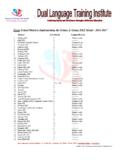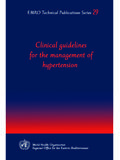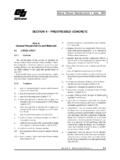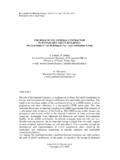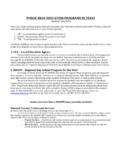Transcription of Texas Two-Way/Dual Language Consortium
1 Dr. Leo G mez, Executive Director, Texas Two-Way/Dual Language Consortium (2005) Texas Two-Way/Dual Language Consortium Introduction The Texas Two-Way/Dual Language Consortium , established December 2000, consists of K-16 educators from across the state of Texas working together for the following three goals: 1) Identify the number of dual Language enrichment programs in Texas , 2) compile and analyze state-wide research and best practices from these programs based on standardized assessments, and 3) advocate for the development and state wide implementation of dual Language education for all students. Mission The Texas Two-Way/Dual Language Consortium is committed to an enriched dual Language education with the goal of biliteracy for all students based on current research and best practices.
2 It advocates for the implementation of educational programs in public education that ensure that all learners are academically and linguistically equipped in at least two languages with the necessary skills to successfully compete in a linguistically and culturally diverse society Goals To assist in the implementation of dual Language programs in Texas committed to the development of high levels of Language proficiency & academic achievement in student s first and second Language To provide opportunities for training, resources and support necessary to implement changes in educational policies that promote effective dual Language education for all students To coordinate and disseminate statewide research on best practices in dual Language programs that provide an equal educational opportunity for all students To assist in the development and implementation of Senate Bill 467 so that some day every Texas student will master English plus another Language To assist in the establishment of a statewide educational system that values.
3 Respects and incorporates the state's cultural & linguistic diversity To assist school districts across the state in building a long-term commitment and advocacy for enrichment education at all levels Consortium Members Institutions of Higher Education Regional ESCs School Districts Other Institutions Sam Houston State University Region 1 ESC Aldine ISD In-Line Resources Southern Methodist University Region 2 ESC Brownsville ISD Modern Languages Services Texas A & M University Region 4 ESC Canutillo ISD SRA/McGraw-Hill The University of Texas Brownsville Region 6 ESC Donna ISD Texas Migrant Council The University of Texas El Paso Region 9 ESC Edgewood ISD The University of Texas Pan American Region 10 ESC Galena Park ISD The University of Texas San Antonio Region 13 ESC Grand Prairie ISD Region 15 ESC Hidalgo ISD Region 16 ESC Houston ISD Region 17 ESC Lubbock ISD Region 18 ESC Mercedes ISD Pharr-San Juan-Alamo ISD
4 San Antonio ISD San Angelo ISD Socorro ISD Weslaco ISD Ysleta ISD Dr.
5 Leo G mez, Executive Director, Texas Two-Way/Dual Language Consortium (2005) Texas Two-Way/Dual Language Consortium Dr. Leo G mez, Executive Director, Associate Professor-UTPA Dr. Jos Ruiz-Escalante, Professor-UTPA Dr. Shelley Wright, Associate Professor-SMU (January 11, 2005) Introduction The effectiveness of Bilingual Education (BE) has long been substantiated in the research. One common element found in all programs with successful limited English proficient (LEP) student school achievement is validation and academic development of the native Language . Successful programs continue to demonstrate that the route to academic English and long-term achievement in school for LEP students is through a strong education in their native Language .
6 Although instruction in Spanish (native Language ) appears counter-intuitive to English Language acquisition, it is the best route because it is focused on academic learning that involves cognitive and linguistic development. Therefore, in late-exit transitional bilingual (sometimes referred to as maintenance ) programs where LEP students exit native Language instruction 4-5 years, and dual Language programs, where LEP students continue native Language instruction PK-5, there is greater long-term success of these students. The Concept of Transfer It is an understanding of cognitive transfer that is a fundamental principle of bilingual education. Cognitive transfer is an understanding that knowledge, skills and cognitive development occurs in any Language and easily transfers to a second Language .
7 However, the initial development of this knowledge and skills is best and more readily developed in the native Language and then transferred to the second Language . In other words, you only learn a math or reading concept one time in Spanish and transfer the concept to English. BE stresses the importance of ELLs learning content areas and reading in their native Language (knowledge and skills), while at the same time they acquire basic English Language skills. Once the LEP student is educated and on level cognitively and linguistically in his or her native Language and has developed skills in the English Language , he or she is ready for increased English instruction. BICS & CALP Language Proficiency Another important concept shared by Cummins (1981) and fundamental to BE, is the recognition that a first or second Language develops in stages: 1) Basic Interpersonal Communication Skills (BICS) and 2) Cognitive Academic Linguistic Proficiency (CALP).
8 The distinction between BICS and CALP is critical in BE. The first stage, BICS, is achieving a degree of Language proficiency where the individual can carry on a conversation, etc. It is not sufficient to learn academic content in school. BICS takes approximately 2-3 years to fully master. The second stage is CALP. CALP is having the academic proficiency in a Language necessary to perform academic demands in school, like reading a science or social studies book with comprehension. CALP takes approximately 5-7 years to develop. Successful BE programs recognize these two basic principles and therefore provide ELLs with native Language instruction for a minimum of five (5) years, and at the same time develop English.
9 However, the central focus of BE programs is full literacy in the native Language in order to more successfully make a transition to the second Language and ensure long-term academic achievement at the middle and high school level. The fastest route to academic English is through the academic development of the native Language . Effective Models of Bilingual Education are Enrichment, not Remedial Models Based on the principles outlined above, only enrichment models of BE ( Two-Way/Dual Language ) effectively close the academic achievement gap for ELLs based on long-term standardized assessments. In contrast, remedial models (transitional early-exit or ESL) only partially close the gap.
10 As reported by Thomas & Collier (2004), in remedial models of BE, once ELLs leave a special remedial program and join the curricular mainstream, at best, they make one year s progress each school year (just as typical native English speakers do), thus maintaining but not further closing the gap. In fact, often the gap widens again as students move into the cognitive challenge of the secondary years (middle and high school) where former ELLs begin to make less than one year s progress per year. All of the following are classified as remedial programs: Dr. Leo G mez, Executive Director, Texas Two-Way/Dual Language Consortium (2005) 1) Intensive English classes ( English-only referenda in California, Arizona, and Massachusetts), 2) English as a Second Language (ESL) pullout, 3) Transitional Bilingual Education (particularly early-exit models) Thomas & Collier explain that remedial programs may only provide ELLs with very important support for one to three years and often offer watered down instruction in a special curriculum focused on one small step at a time process because the goal is to subtract the native Language and thus not develop it.

